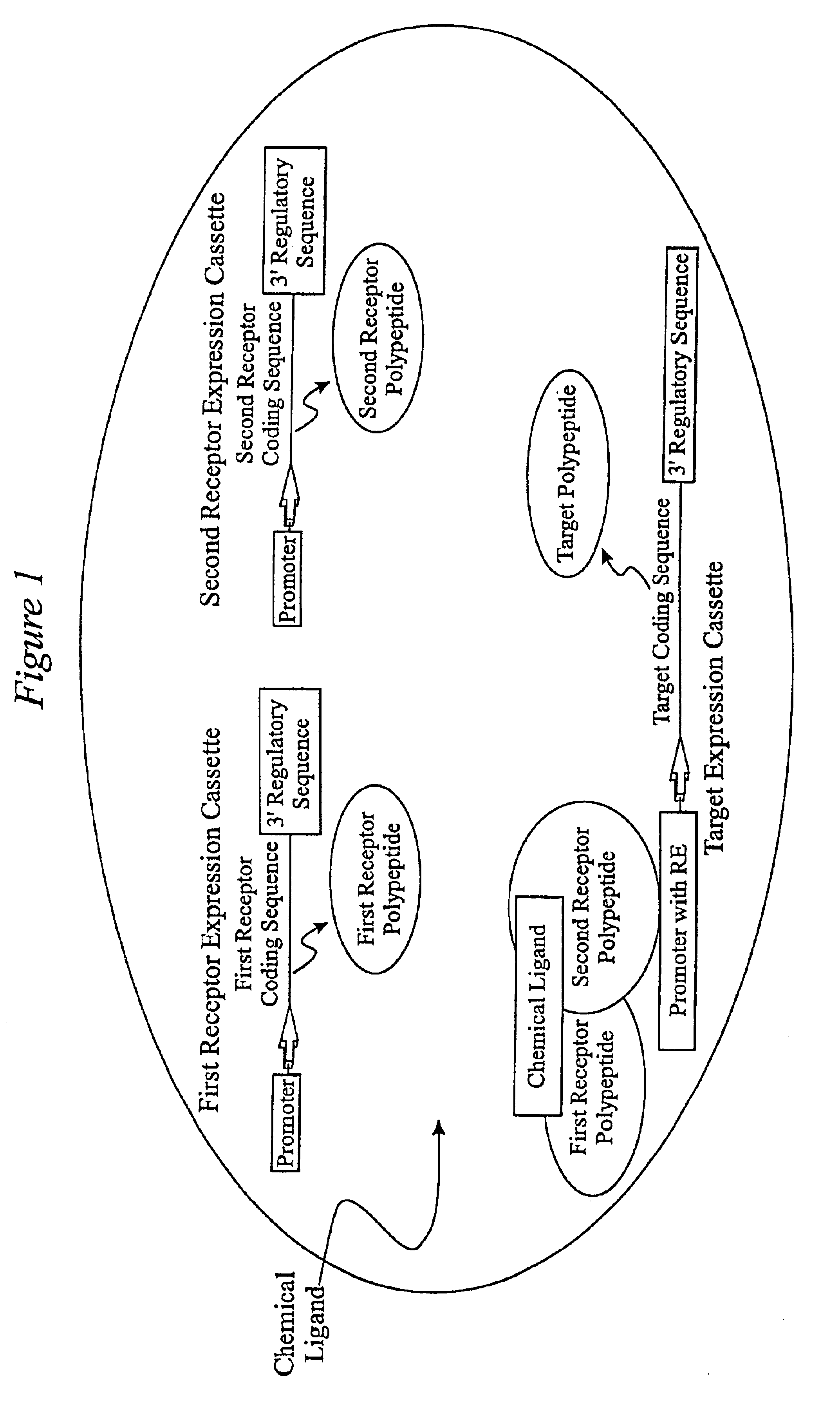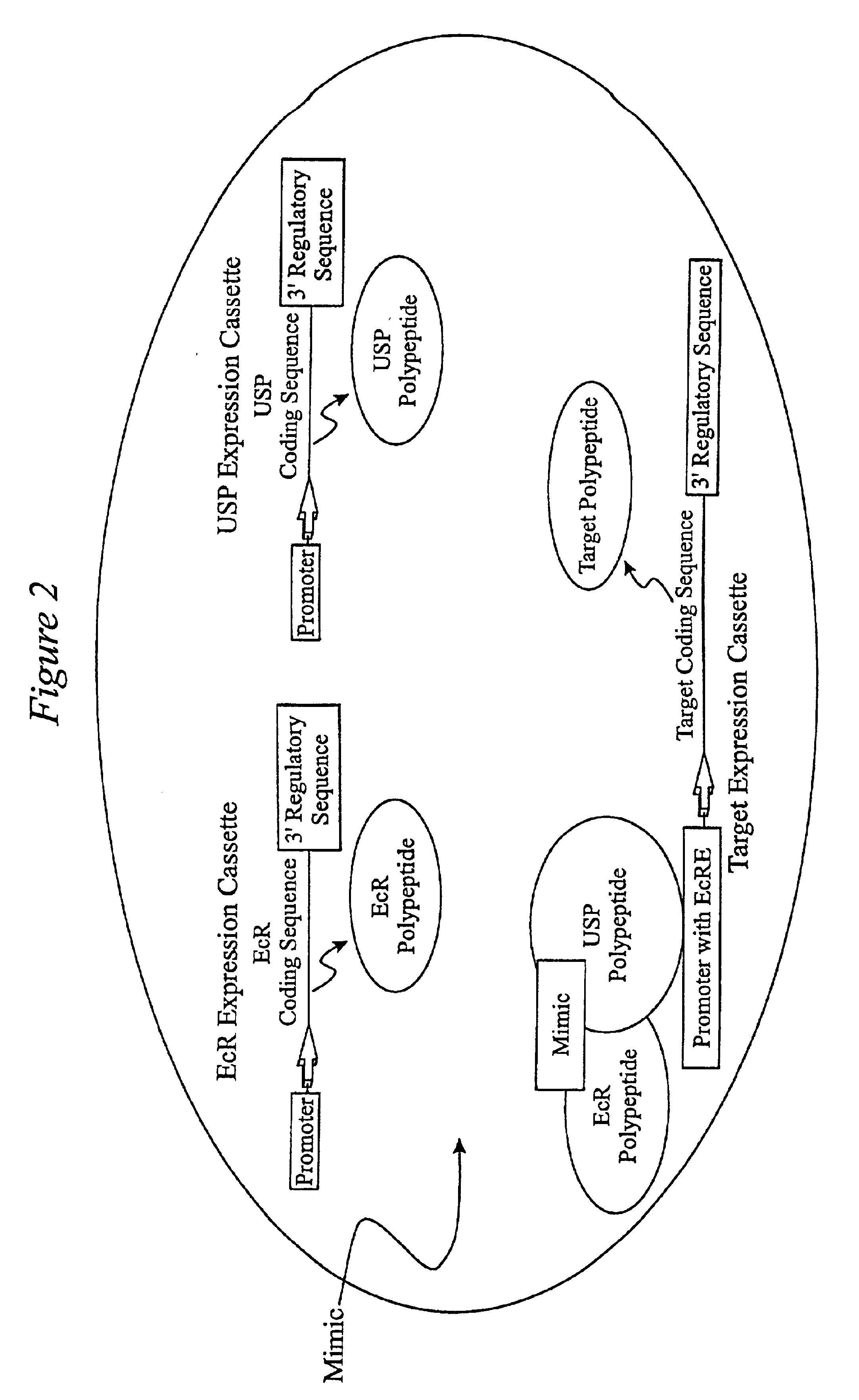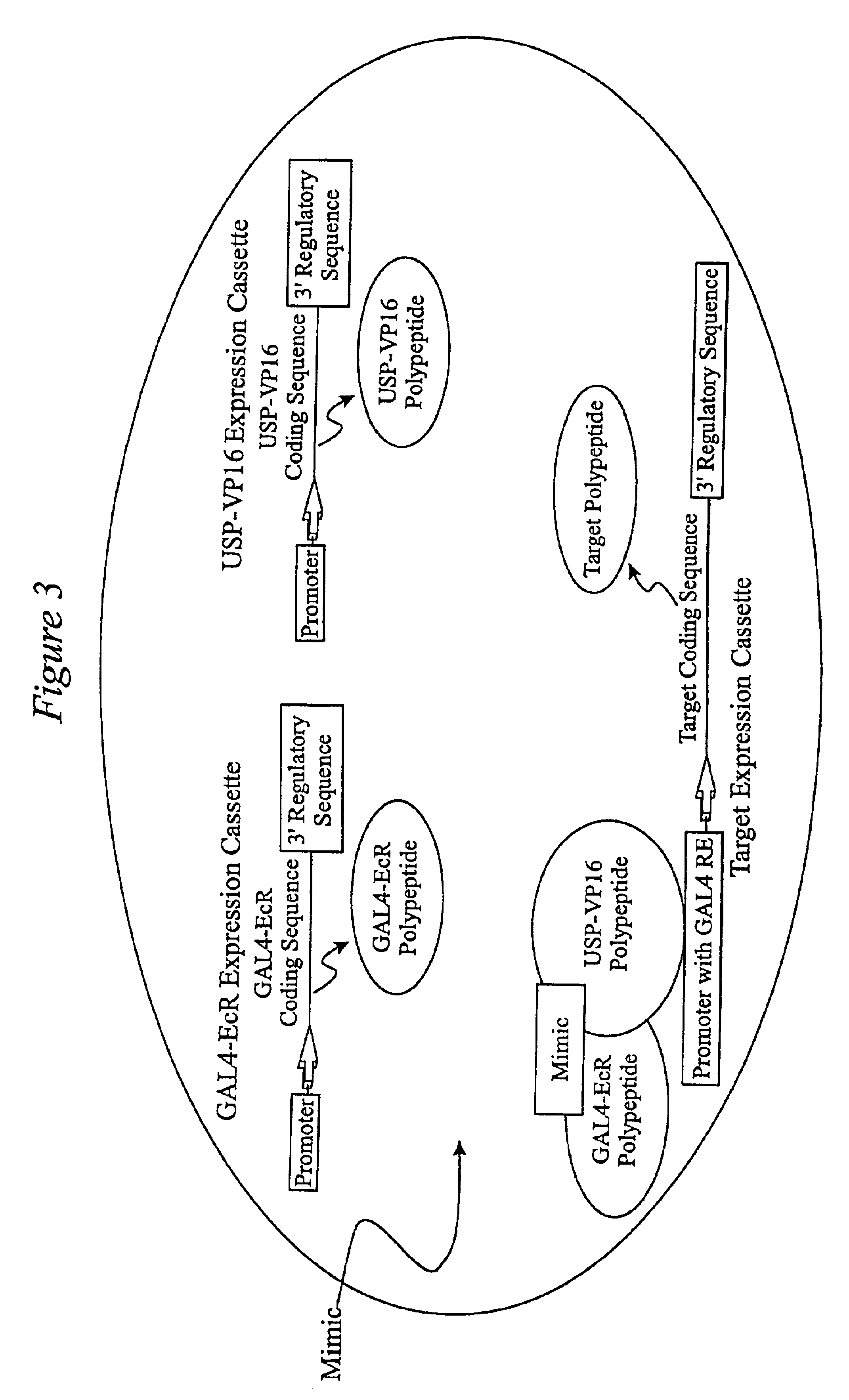Control of gene expression in plants by receptor mediated transactivation in the presence of a chemical ligand
- Summary
- Abstract
- Description
- Claims
- Application Information
AI Technical Summary
Benefits of technology
Problems solved by technology
Method used
Image
Examples
example 1
Construction of a Plant-expressible Receptor Expression Cassette Encoding the Ecdysone Receptor
[0090]The DNA coding region for the Ecdysone Receptor (EcR) of Drosophila was isolated from a cDNA library derived from Canton S pupae (day 6) prepared in λgtl1 (Clontech, cat. no. IL 1005b), and from fragments generated by genomic PCR with oligonucleotides designed from the published sequence of the B1 isoform of the EcR (Koelle et al., Cell 67:59, 1991). The B1 isoform EcR sequence was confirmed by automated sequence analysis using standard methods and alignment with the published sequence (Talbot et al., Cell 73:1323, 1993). The expressed full length EcR coding region was modified to contain a BamHI site immediately upstream from the start codon using the oligonucleotide SF43 (5′-CGC GGA TCC TAA ACA ATG AAG CGG CGC TGG TCG AAC AAC GGC-3′; SEQ ID NO:1) in a PCR reaction. The plant expression vectors pMF6 and pMF7 contain a Cauliflower Mosaic Virus 35S promoter (CaMV 35S), a maize Adh1 In...
example 2
Construction of a Plant-expressible Receptor Expression Cassette Encoding the Ultraspiracle Receptor
[0091]The cDNA encoding the native Ultraspiracle receptor (USP) of Drosophila is described by Henrich et al., Nucleic Acids Research 18:4143 (1990). The full length USP coding sequence with the flanking 5′ and 3′ untranslated regions was ligated into the plant expression vector pMF7 (described in Example 1) using the flanking EcoRI restriction sites. This receptor expression cassette is referred to as 35S / USP.
example 3
Construction of a Receptor Expression Cassette having the DNA Binding Domain from GAL4 and the Ligand Binding Domain from EcR
[0092]A receptor expression cassette was constructed where the DNA binding domain of EcR is replaced by the DNA binding domain of GAL4 fused at the N-terminal position. The DNA coding region for the EcR of Drosophila was obtained as described in Example 1. The coding sequence for the DNA binding domain of GAL4 was subcloned from plasmid pMA210. Ma and Ptashne, Cell, 48: 847 (1987).
[0093]A receptor expression cassette encoding a GAL4-EcR chimeric receptor polypeptide was constructed by fusion of the DNA binding domain of GAL4 to the ligand binding domain and carboxy terminus of EcR. To make the fusion, the oligonucleotide SF23 (5′-CGC GGG ATC CAT GCG GCC GGA ATG CGT CGT CCC G-3′; SEQ ID NO:2) was used to introduce by PCR a BamHI site into the cDNA sequence for EcR at the nucleotide position equivalent to amino acid residue 330 (immediately following the EcR DNA...
PUM
| Property | Measurement | Unit |
|---|---|---|
| Gene expression profile | aaaaa | aaaaa |
Abstract
Description
Claims
Application Information
 Login to View More
Login to View More - R&D
- Intellectual Property
- Life Sciences
- Materials
- Tech Scout
- Unparalleled Data Quality
- Higher Quality Content
- 60% Fewer Hallucinations
Browse by: Latest US Patents, China's latest patents, Technical Efficacy Thesaurus, Application Domain, Technology Topic, Popular Technical Reports.
© 2025 PatSnap. All rights reserved.Legal|Privacy policy|Modern Slavery Act Transparency Statement|Sitemap|About US| Contact US: help@patsnap.com



